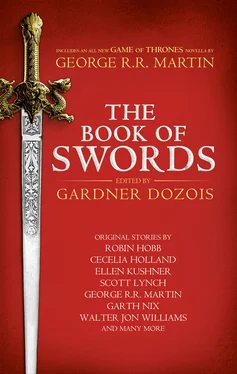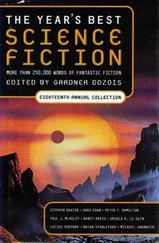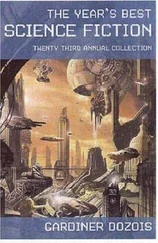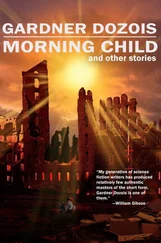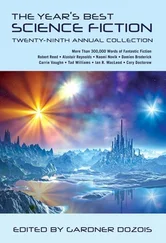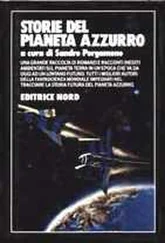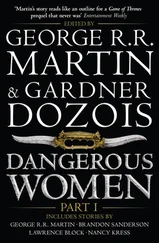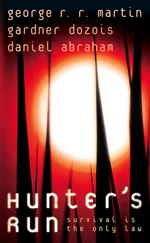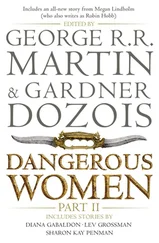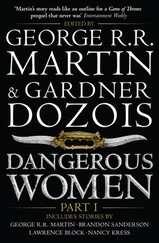Unknown , edited by equally legendary editor John W. Campbell, Jr., who at about the same time as he was revolutionizing science fiction as the editor of
Astounding was revolutionizing fantasy in the pages of
Astounding ’s sister magazine
Unknown from 1939 to 1943, when the magazine was killed by wartime paper shortages. In the early sixties, in a decade when the publishing industry was still coming out from under the shadow of postwar grim social realism, there was very little fantasy being published in a format affordable to purchase by a short-of-funds high-school student (except for the stories in genre magazines such as
The Magazine of Fantasy & Science Fiction , which I didn’t know about at the time), and the rich harvest of different types of fantasy story available in
Unknown was a revelation to me.
The story that had the biggest effect on me, though, was a bizarre, richly atmospheric story called “The Bleak Shore,” by Fritz Leiber, in which two seemingly mismatched adventurers, a giant swordsman from the icy North named Fafhrd and a sly, clever, nimble little man from the Southern climes called the Gray Mouser, are compelled to go on a doomed mission which seems destined to send them to their death (which fate, however, they cleverly avoid). It was a story unlike anything I’d ever read before, and I immediately wanted to read more stories like that.
Fortunately, it wasn’t long before I discovered another anthology on the drugstore spinner racks, Swords & Sorcery , edited by L. Sprague de Camp, this one not only containing another Fafhrd and the Gray Mouser story, but dedicated entirely to the same kind of fantasy story, which I learned was called “Sword & Sorcery,” a name for the subgenre coined by Leiber himself; in the pages of this anthology, I read for the first time one of the adventures of Robert E. Howard’s Conan the Barbarian and C. L. Moore’s Jirel of Joiry, as well as stories by Poul Anderson, Lord Dunsany, Clark Ashton Smith, and others. And I was hooked, becoming a lifelong fan of Sword & Sorcery, soon haunting used-book stores in what was then Scollay Square in Boston (now buried under the grim mass of Government Center), hunting through piles of moldering old pulp magazines for back issues of Unknown and Weird Tales that featured stories of Conan the Barbarian and Fafhrd and the Gray Mouser and other swashbuckling heroes.
What I had blundered into was the first great revival of interest in Sword & Sorcery, a subgenre of fantasy that had at that point lain fallow for decades, with almost all of the material in those anthologies and those old pulp magazines having been published in the thirties or forties or even earlier, about the time that stories that took place in distinct fantasy worlds instead of seventeenth-century France or imaginary Central European countries began to precipitate out from the larger and older body of work about swashbuckling, sword-swinging adventurers written by authors such as Alexandre Dumas, Rafael Sabatini, Talbot Mundy, and Harold Lamb. After Edgar Rice Burroughs in A Princess of Mars and its many sequels sent adventurer John Carter to his own version of Mars, called Barsoom, to rescue princesses and have sword fights with giant four-armed Tharks, a closely parallel form to Sword & Sorcery sometimes called “Planetary Romance” or “Sword & Planet” stories developed, most prominently in the pages of pulp magazine Planet Stories between 1939 and 1955, with the two subgenres exchanging influences, and even many of the same authors, including authors such as C. L. Moore and Leigh Brackett, who were highly influential in both forms. The richly colored tales that made up Jack Vance’s classic The Dying Earth , also published about then, were also technically science fiction, but with their interdimensional intrusions, strange creatures, and mages who wielded what could either be looked at as magic or the highest of high technology, they could also function as fantasy as well.
Probably not coincidentally, interest in Sword & Sorcery, which had faded over the wartime years and throughout the fifties, began to revive in the sixties, after the Mariner and Venera and other space probes were making it increasingly obvious that the rest of the solar system was incapable of supporting life as we knew it—no ferocious warriors to have sword fights with or beautiful princesses in diaphanous gowns to romance. Nothing but airless balls of barren rock.
From now on, if you wanted to tell those kinds of stories, you were going to have to do it in fantasy.
Throughout the early sixties, Sword & Sorcery boomed, with D. R. Bensen, L. Sprague de Camp, and Leo Margulies mining the rich lodes of Unknown and Weird Tales magazines for other anthologies (Bensen—an important figure in the development of modern fantasy, now, sadly, mostly forgotten—was the editor of Pyramid Books, and also mined the pages of Unknown for classic fantasy novels such as de Camp and Fletcher Pratt’s The Incomplete Enchanter and The Castle of Iron to reprint), collections of the original Conan stories being reissued, new Conan stories and novels being produced by other hands, Michael Moorcock producing his hugely popular stories and novels about Elric of Melniboné (which have continued to the present day), and obvious imitations of Conan such as John Jakes’s “Brak the Barbarian” stories being turned out. (At about this time, Cele Goldsmith, the editor of Amazing and Fantastic magazines, began to coax Fritz Leiber out of semiretirement and got him to write new Fafhrd and the Gray Mouser stories for Fantastic , which, once I noticed that, induced me to begin regularly picking a genre magazine up off the newsstands for the first time, which in turn induced me to begin buying science-fiction magazines such as Amazing , Galaxy , and Worlds of If— which means that, ironically, although I’d later become associated with science fiction, and would edit a science-fiction magazine myself, I came to them first because I was looking for more Fafhrd and the Gray Mouser stories in the pages of a fantasy magazine … although to be fair I was at the same time reading SF such as the Robert A. Heinlein and Andre Norton “juveniles,” and stuff such as Hal Clement’s Cycle of Fire and—also published by Pyramid Books— Mission of Gravity .)
Then came J.R.R. Tolkien.
J.R.R. Tolkien’s The Lord of the Rings trilogy is often cited these days as having single-handedly created the modern fantasy genre, but, while it is certainly hard to overestimate Tolkien’s influence—almost every subsequent fantasist was hugely influenced by Tolkien, even, haplessly, those who didn’t like him and reacted against him—what is sometimes forgotten these days is that Don Wollheim published the infamous “pirated” edition of The Fellowship of the Ring (the opening book of the trilogy) as an Ace paperback in the first place because he was casting desperately around for something—anything!—with which to feed the hunger of the swelling audience for Sword & Sorcery. The cover art of the Ace edition of The Fellowship of the Ring (by Jack Gaughn, of a wizard waving a sword and a staff aloft on top of a mountain) makes it clear that Wollheim thought of it as a “sword & sorcery” book, and his signed interior copy makes that explicit by touting the Tolkien volume as “a book of sword-and-sorcery that anyone can read with delight and pleasure.” In other words, in the United States at least, the genre audience for fantasy definitely predated Tolkien, rather than being created by him, as the modern myth would have it. Don Wollheim knew very well that there was a genre fantasy audience already out there, already in place, a hungry audience waiting to be fed—although I doubt if even he had the remotest idea just how tremendous a response there would be to the tidbit of “sword & sorcery” that he was about to feed them. The Tolkien novels had already appeared in expensive hardcover editions in Britain, but the Ace paperback editions—and the “authorized” paperback editions that followed from Ballantine Books—made them available for the first time in editions that kids like me and millions of others could afford to buy.
Читать дальше
